Your spine is a wondrous thing. It’s made of 33 bones called vertebrae, fibrous discs that absorb shock and facilitate movement, connective ligaments, and a large number of muscles, ranging from tiny and weak to large and strong. It’s an amazing feat of bioengineering.
However, because your spine is very complex, there is a lot that can go wrong with it too. Your spine is easily injured, and that can cause acute and chronic back pain. Back pain can range from mildly annoying to utterly debilitating.
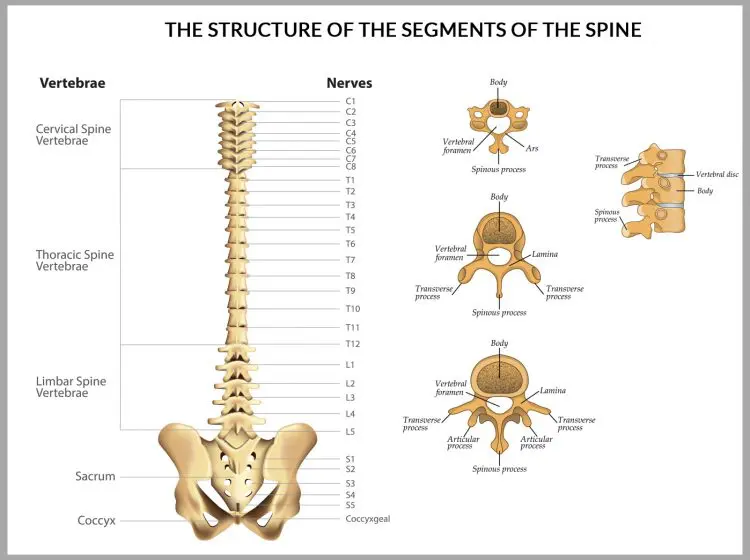
According to studies, as many as 80% of adults will suffer from some back pain (1), and it’s the third most common reason for visiting the doctor’s office (2).
Incidences of back pain continue to rise and can directly be linked to several modifiable factors, including:
- Poor posture
- Prolonged sitting and sedentarism
- Being overweight
- Weak core and hip muscles
- Improper lifting/exercise technique
- Lack of flexibility
While many of the causes of back pain can be addressed to reduce your risk, some are just part of life, such as pregnancy, automobile accidents, and medical conditions that affect the spine.
Related: 15 Ways to Avoid Back Pain in The Gym
Level Up Your Fitness: Join our 💪 strong community in Fitness Volt Newsletter. Get daily inspiration, expert-backed workouts, nutrition tips, the latest in strength sports, and the support you need to reach your goals. Subscribe for free!
In some cases, back pain can be relieved by stretching (3). Stretching reduces the resting tension within your muscles, allowing them to relax. Relaxed muscles tend to have a better blood flow, and better blood flow promotes faster healing.
Of course, if you have severe back pain, you should speak to your doctor before trying to self-treat it with back stretching exercises. However, if your issues are mild or your doctor has given you the go-ahead, stretching may help alleviate or prevent back pain.
The 10 Best Stretching Exercises for Lower Back
The best back pain relief exercises either stretch the affected muscles or decompress your spine. Some do both at the same time. They can provide immediate relief from back pain, reduce the severity of your discomfort, or may stop it from happening in the first place. Add these exercises to your back workout or do them anytime you need to ease your sore, aching back.
1. Child’s pose
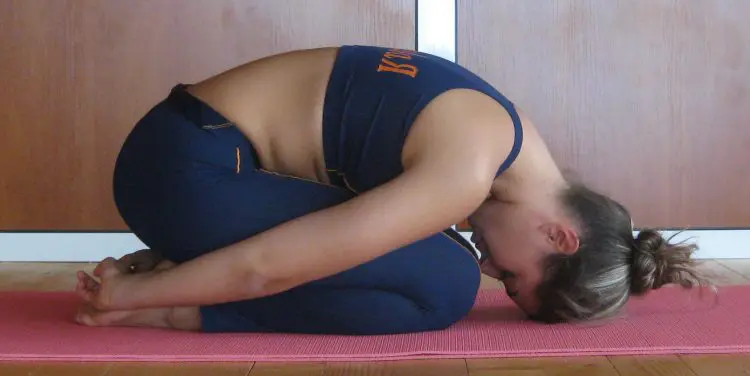
Child’s pose, also known as resting child’s pose, is a restorative yoga exercise or asana. Called balasana in the original Sanskrit, this is a very relaxing exercise that gently stretches and decompresses your entire spine, as well as your glutes.
How to do it:
- Kneel down on all fours so that your hips are directly over your knees and your shoulders are over your hands. Point your toes away from you, so the top of your feet are flat on the floor.
- Ease your hips backward and rest your butt on your heels.
- Rest your abdomen on your thighs and your forehead on the floor.
- Bring your arms down and into your sides and rest them on the floor with your palms facing upward. Imagine your body is melting into itself as all tension falls away.
- Hold this position for at least a minute, breathing deeply and evenly throughout.
- On completion, ease out of the stretch and slowly stand up. Take care as you may feel slightly dizzy.
2. Cat-cow pose
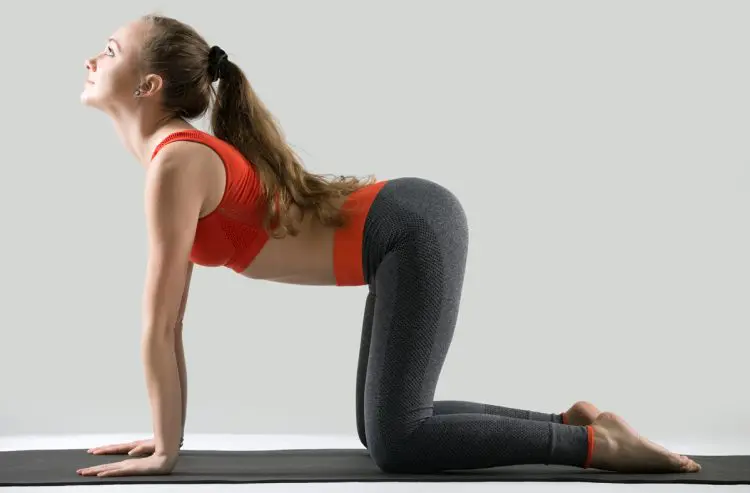
This is another yoga asana or exercise. While it provides your back muscles with a gentle but effective stretch, it will also mobilize your spine. This is an excellent warm-up exercise that you can use to prepare your back muscles and spine before a workout. It’s especially useful after periods of inactivity, e.g., after sitting for a long time.
How to do it:
- Kneel down on all fours so that your hips are directly over your knees and your shoulders are over your hands.
- Lower your head toward and the floor and lift the center of your back up toward the ceiling. Imagine there is a string tied to your spine pulling you upward.
- Next, lift your head and lower your belly down toward the floor.
- Alternate between these two positions slowly and smoothly. Continue for a minute or for a specific number of reps, e.g., eight.
3. Double knees to chest stretch

This simple exercise stretches your lumbar spine and the associated lower back muscles. It’s very gentle and relaxing, so you should have no problem holding it for several minutes at a time.
How to do it:
- Lie on your back with your legs bent and feet flat. Place a cushion under your head if required.
- Lift your legs and place your hands behind your knees. Do not put your hands on the front of your knees or shins, as doing so may put too much pressure on your joints.
- Gently pull your knees toward your chest to create a mild stretch in your lower back.
- Get a deeper stretch by linking your hands behind your knees.
4. Sphinx stretch
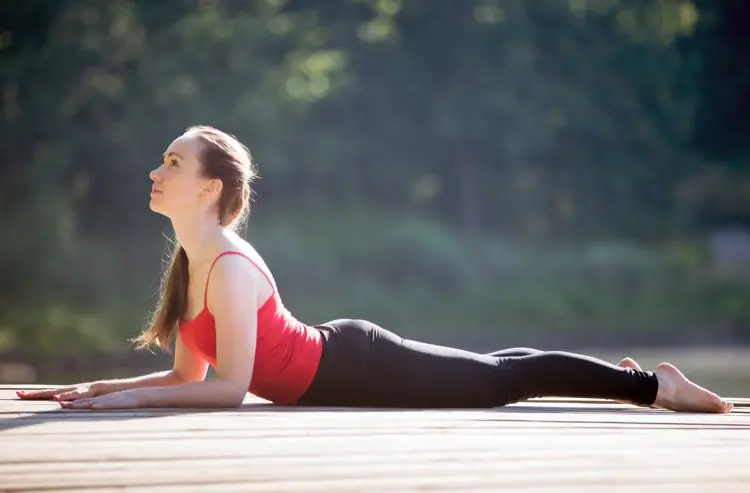
When you sit for a long time or have a (hyperkyphotic (rounded back) posture, your lumbar discs tend to move backward, placing pressure on your sciatic nerve. This can cause inflammation and pain, a condition often called sciatica. This stretch is designed to gently realign your discs, relieving the pressure and alleviating pain in the process.
How to do it:
- Lie on your front with your hands under your shoulders, arms bent, and forehead resting on the floor. Stay like this for a moment or two.
- Next, rise up and rest on your elbows. Your forearms should be flat and pointing forward, and your elbows should be beneath your shoulders. Gently press your hips and abdomen into the floor. Remain in this position for a minute or so.
- If you feel able, extend your arms and gently press yourself up and into a deeper stretch. Make sure your legs and hips remain on the floor. Only lift up as far as you comfortably can.
- Make sure you breathe slowly and evenly throughout.
5. Piriformis stretch
The piriformis is a strong, deep muscle in your hips. Tight piriformis muscles are a common source of back pain. Prolonged sitting can lead to piriformis tightness, and stretching it may provide relief from discomfort, as well as freeing up your hips for easier movements.
Level Up Your Fitness: Join our 💪 strong community in Fitness Volt Newsletter. Get daily inspiration, expert-backed workouts, nutrition tips, the latest in strength sports, and the support you need to reach your goals. Subscribe for free!
How to do it:
- Lie on your back with both knees bent and your feet flat on the floor. Place your head on a cushion for comfort.
- Lift and bend one leg and pull your bent knee in toward your chest.
- Simultaneously, pull your foot over toward your opposite hip until you feel a deep but comfortable stretch in the outside of your flexed hip.
- Hold this position for a minute or two.
- Slowly release the stretch and swap sides.
6. Seated spinal twist (Ardha matsyendrasan)
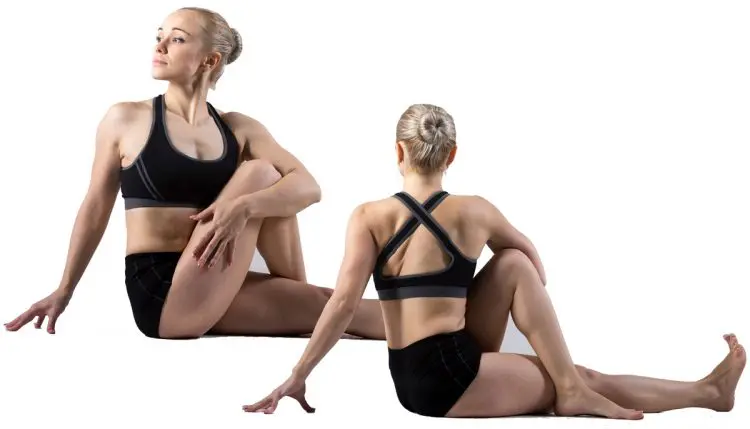
This exercise mobilizes your spine with gentle rotation, stretching your lower back, core, and shoulder muscles at the same time. Most of life’s activities occur in what is called the sagittal plane, i.e., forward and backward. Twisting exercises like this one provide an escape from sagittal movements and stretch the muscles that are otherwise not used very often.
How to do it:
- Sit on the floor with both legs straight out in front of you.
- Bend your right leg and place your foot on the floor outside your left knee.
- Cross your left arm over your right knee, and place your right hand on the floor behind you to support your spine.
- Rotate your head and shoulders to the right as far as you feel comfortable. Use your left arm to gently push you around a little further if required.
- Hold this position for a minute or so.
- Slowly unwind, swap sides, and repeat.
7. Dead hang
Heavy squats, deadlifts, and overhead presses, as well as the unyielding effect of gravity, can compress your intervertebral discs, reducing the space between the bones of your spine. This can cause back pain. In fact, you are a little shorter at the end of the day because of the forces placed on your spine.
Dead hangs are designed to alleviate this pressure and decompress your spine.
How to do it:
- Hold an overhead bar with an overhand, roughly shoulder-width grip.
- Lift your feet off the floor and hang by your hands for as long as you comfortably can.
- Remain motionless – no swinging or twisting – for the duration of your set. When you are done, step rather than jump down as jumping will shock load your spine, negating some of the decompressing benefits of this exercise.
8. Stability ball back stretch
This gentle exercise decompresses your spine and stretches your back muscles at the same time. It’s a very comfortable exercise to perform, making it ideal for doing regularly and for an extended time. Use a large stability ball to ensure it supports your entire body.
How to do it:
- Kneel down and place a stability ball in front of you.
- Lean forward and lay your stomach and chest on the ball. Drape your arms over the front of the ball.
- Curve your body over the ball and allow the weight of your head and legs to gently distract and decompress your spine.
- Remain in this position for a couple of minutes, breathing slowly throughout.
9. Assisted double leg hamstring and lower back stretch
Tight hamstrings are a leading cause of lower back pain. They pull the bottom of your pelvis forward, causing your normally slightly curved lower back to flatten, which puts pressure on the intervertebral discs and spinous ligaments. This exercise stretches your hamstrings and your lower back simultaneously, making it a great back pain twofer.
How to do it:
- Sit on the floor with your legs extended in front of you. Loop a resistance band, stretch, strap, or belt over your feet and hold the ends in your hands.
- Lean forward and use your arms to gently pull your upper body forward.
- Gently increase the stretch as you feel your muscles relax.
- Hold for at least 60 seconds, breathing slowly and evenly throughout.
10. Supine twist
Our final back stretching exercise is another relaxing move that helps rotate and release tension from your muscles while mobilizing your spine. You’ll also feel a mild but beneficial stretch across the outside of your hips, chest, and shoulders.
How to do it:
- Lie on your back with your legs straight and your arms out level with your shoulders to form a T shape.
- Bend your left leg and place your foot on the floor. Place your right hand on your left knee.
- Gently pull your leg over and down toward the floor. Try to keep your shoulders and left arm flat on the floor.
- Hold this position (but not your breath!) for 60 seconds or so and then slowly swap sides.
Back Stretching – Wrapping Up
When it comes to back pain, avoidance is your best policy. Take care of your back by keeping your core strong, lifting with good technique, breaking up long periods of sitting with regular standing breaks, and adopting a more upright posture.
But, even with these precautions, you may still experience back pain.
Use these ten exercises to stretch your back muscles and decompress your spine. They can help alleviate existing pain and may prevent it in the first place. However, if your back pain is constant or severe, your first port of call should always be your doctor’s office. In some instances, stretching could actually make things worse. Always seek professional medical advice for serious aches, pains, and injuries.
References:
1 – PubMed: The Rising Prevalence of Chronic Low Back Pain https://www.ncbi.nlm.nih.gov/pmc/articles/PMC4339077/
2 – American Chiropractic Association: Back Pain Facts and Statistics https://www.acatoday.org/Patients/What-is-Chiropractic/Back-Pain-Facts-and-Statistics
3 – National Institute of Health: Yoga or Stretching Eases Low Back Pain https://www.nih.gov/news-events/nih-research-matters/yoga-or-stretching-eases-low-back-pain










